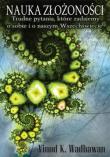
|
« Biblia Look and Live As the people of Israel journeyed through the wilderness, they became so discouraged that they complained against God and said to Moses, „There's no water out here, and we can't stand this awful food!" Then the Lord [Yahweh] sent poisonous snakes among the people. These snakes bit and killed many of the Israelites. Therefore the people came to Moses and said, „We have sinned by insulting you and the Lord. So please pray to the Lord and ask him to make these snakes go away."Moses did pray for the people, and the Lord said to Moses, "Make a snake out of bronze and place it on top of a pole, so that anyone who gets bitten can look at the snake and live." Moses did as the Lord said, and it came to pass that any who were bitten and then looked at the bronze snake lived (Numbers 21:4-9, based on several translations). Jesus had these incidents in mind when he said, "As Moses lifted up the serpent [snake] in the wilderness, even so must the Son of man be lifted up: That whosoever believeth in him should not perish, but have eternal life"(John 3:14-15, King James Version). 1. The Gospel in Miniature. "God only knows" how many impassioned sermons have been preached on these texts. Fervent preachers proclaim that the bronze serpent on the pole is the clearest of all the pictures of Calvary in the Old Testament. Just as the bitten Israelite had only to look with faith upon the bronze serpent on the pole to be healed and to receive physical life, so too the sinner today needs only to look with faith to Jesus on the cross to be saved and to receive eternal life. Nobody needs to understand the philosophy of the transaction. Just look and live! There is life in a look! But it must be a look of faith. In short, the uplifted serpent brings to us the Gospel in miniature. Just for the fun of it, let's probe into „the philosophy of the transaction" and see what we find. 2. Creeping Horrors. When Jesus compared his body on a cross to a bronze serpent on a pole, he was endorsing a concept of God which is reprehensible to thoughtful people. No God worthy of the name would send poisonous snakes to bite to death many hot, tired, and hungry people who were justly complaining about the menu. Moreover, no good God would have created poisonous snakes in the first place. Poisonous bites cause the most horrible suffering: headaches, vomiting, difficulty in breathing, sharp pains spreading and becoming more intense, like a burning fire, until death comes as a welcome relief. No God who created such creeping horrors and programmed them to live off the suffering and death of frightened people and animals deserves our respect and love. 3. Moses' Medicines. Jesus told us (John 3:14-15) not only that he believed in a God who created poisonous snakes and sent them to kill complaining Israelites but that he also believed in magic, that is, using actions, objects, and words which he believed were charged with supernatural power to produce supernatural effects. The serpent which Moses made and put on a pole was a magic object, because whoever was bitten by a serpent would look at the serpent (a magic action) and live (Numbers 21:8-9). So, too, Jesus was the magic serpent savior lifted up on the cross, because whoever believed in him would have eternal life (John 3:14-15). Here we have objects (serpent, Jesus) and actions (looking with faith) which are so charged with supernatural power that they produce supernatural effects (physical life instead of physical death, eternal life instead of eternal death). Not only to rationalists but also to many modern believers the idea that looking at a magic bronze serpent will heal one of poisonous snake bites is pure superstition. If any of us, including believers, were bitten by a poisonous snake, we'd rush to a doctor. We wouldn't give so much as a passing thought to looking at a bronze serpent on a pole. It is interesting to note that some rationalists have suggested that the bronze serpent was a sign of the camp hospital, where Moses had doctors and medicines to treat those bitten by the snakes. This rationalist explanation is about as hard to swallow as some of Moses' medicines must have been. If it is superstitious to believe that a magic serpent on a pole can heal people perishing from poison and give them physical life, then it is equally superstitious to believe that a magic man on a cross can heal people perishing from sin and give them everlasting life. 4. Canceling Commandments. When Jesus used the serpent image as an apt illustration of the saving power of his crucifixion, he thereby repudiated God's commandment against making graven images (Exodus 20:4; Deuteronomy 5:8), as well as the commandment of Deuteronomy 4:18, where the Lord (Yahweh) specifically forbids making "the likeness of anything that creeps on the ground," that is, reptiles. Yet this same Jesus issued this dreadful warning: "If you reject even the least important command of the Law [of Moses] and teach others to do the same, you will be the least important person in the kingdom of heaven" (Matthew 5:19, Contemporary English Version). What a terrible judgment Jesus pronounced on himself! Keep on Reading: In John 3: 14-15, as in John 3:16, Jesus endorsed slaughterhouse spirituality (his atoning sacrifice on the cross), salvation by faith, damnation of unbelievers, and everlasting life for believers, all unacceptable to rationalists. For a discussion of these points see "The Gospel in a Nutshell," in my Sweet Jesus (Gordo, AL: The Flatwoods Free Press, 2002), pp. 97-100. For more on serpents and religion see Bernard Katz, "That Great Serpent, the Devil," The American Rationalist, Volume 46 (No.1, January-February 2001), pp. 7-8. Published in the 2002 September/October issue of the American Rationalist ©.
« Biblia (Publikacja: 11-07-2003 Ostatnia zmiana: 30-01-2011)
str. 2538 |
|||||||||||||||||||||||||||||||||||||||||||||||||||||||||||||||||||||||||||||||||||||||||||||||||||||||||||||||||||||
| [ Regulamin publikacji ] [ Bannery ] [ Mapa portalu ] [ Reklama ] [ Sklep ] [ Zarejestruj się ] [ Kontakt ] Racjonalista © Copyright 2000-2018 (e-mail: redakcja | administrator) | ||



